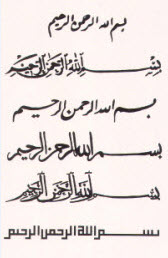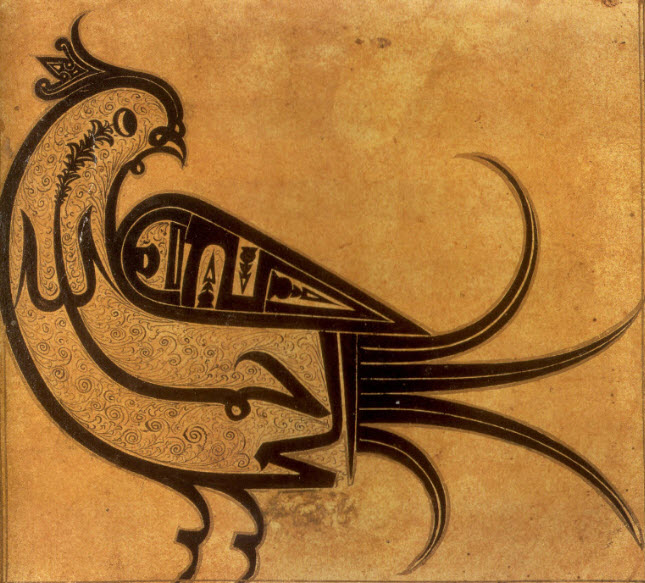“Strive to write elegantly for this will ensure your means of livelihood.”
Caliph ʿAlī ibn Abī Ṭālib (d.661)
Calligraphy, from the Greek kallos (beauty) and graphein (to write) is the art of beautiful writing. Although the development of sophisticated calligraphy as an art form is not unique to Islamic cultures, it has been used to a much greater extent and in varied ways, and in all art forms and materials in Islamic civilisations.
The practice of calligraphy, originating in China during the second millennium BC, spread to many regions including the Middle East. The art of transcribing the Qur’an in a beautiful script was considered a form of devotion and an act of piety. In contrast to painters, potters, and other artists, who generally remained anonymous, the calligraphers frequently signed their works and were thus well-known and highly esteemed.
Calligraphic inscription was not restricted to Qur’anic verses, but also included other religious texts, poems, court documents, and praises for rulers. The calligrapher had to practice for many years to acquire the skill to write with firm, sure strokes, which demanded his full physical and intellectual control over the quill.
During the seventh century, Kufic developed as a script for recording the revelation. The name is derived from the city of Kufa in Iraq, where it developed into an angular script with clear contours and symmetry, becoming the universal script.
As Islam spread to regions where languages other than Arabic were spoken, many styles developed which were influenced by the diverse artistic traditions of the regions. At the beginning of the tenth century in Baghdad, six styles were codified by vizier Ibn Muqla (d. 939) which served as a guide, and which were further developed: Naskhi, Muhaqqaq, Raihani, Tauqi, Riqa, and Thuluth.

The Arabic script is irregular in its proportions and therefore, there is generally an imbalance between the upper and lower parts. The calligrapher endeavoured to create balance by techniques such as enlarging the upper ends into leaf shapes or turning the curves at the lower ends into plant shapes. They also allowed the letters to twine around each other creating a “blossoming” effect. Frequently, the ends were extended to form human or animal heads, which were used only for inscriptions on buildings or vessels, not for the Qur’ans. Within the Kufic script, local styles began to develop such as the slanting Persian script, or the style used in Spain and North Africa which came to be known as Maghribi.*

Upright styles developed when writing on paper, where words were not cramped together as on parchment. The calligrapher was also an illuminator, responsible for the design of the page and the frames around the main body of the texts and the drawing of outlines: every line had to be carefully planned so as not to extend into the margins; facing pages had to be included into the planning process to avoid imbalance.

The type of pen, whose nib was made from cutting a reed, was an important factor in the effects of calligraphic inscriptions. A variety of effects were achieved by cutting the nib in different ways, allowing the calligrapher to create thick and thin lines, adding elegance and variety to the script. Wider nibs were needed for larger script so that the width of the line stayed in proportion to the overall size of the writing. A system of proportion based on the width of the nib also determined the shapes of the individual letters, and the relative sizes of the letters in a line of writing.
Calligraphy was an art that required a special skill to achieve mastery.
*In medieval Muslim geography, Maghrib referred to the western part of North Africa: present–day Morocco, Algeria and Tunisia.
Sources:
Strokes and Hairlines, Elegant Writing and its Place in Muslim Book Writing, McGill University, Digital Library
Elke Niewohner, “Islamic Calligraphy,” Islam Art and Architecture, Edited by Markus Hattstein and Peter Delius, Konemann, 2000
